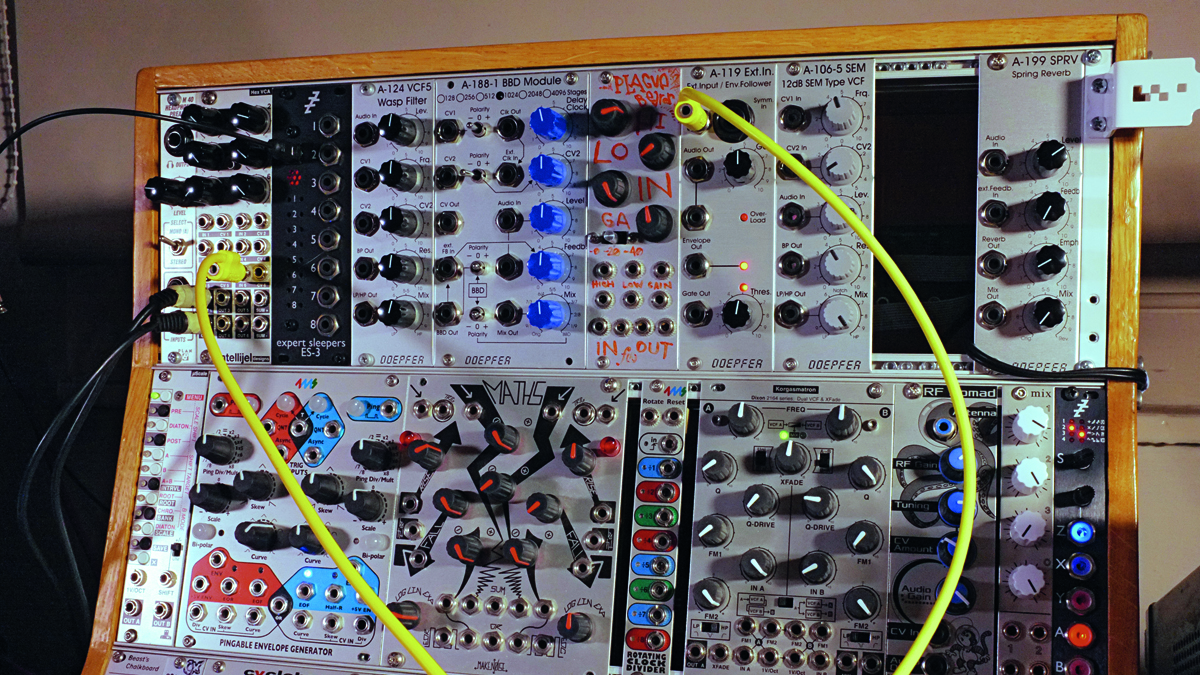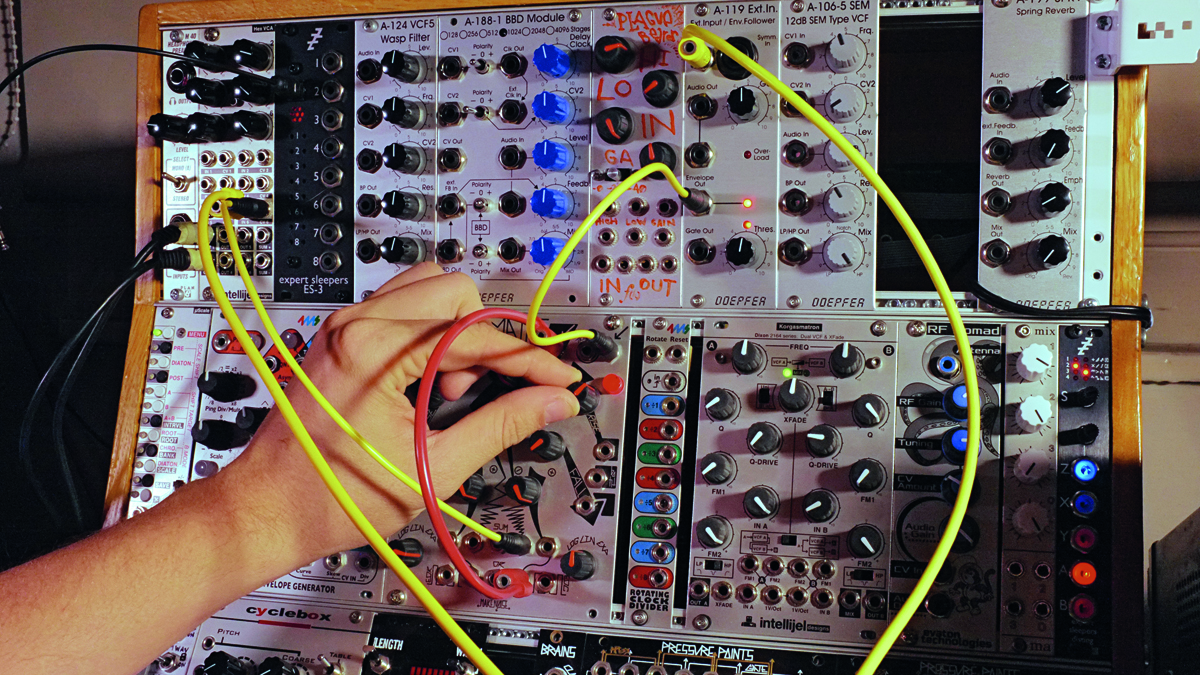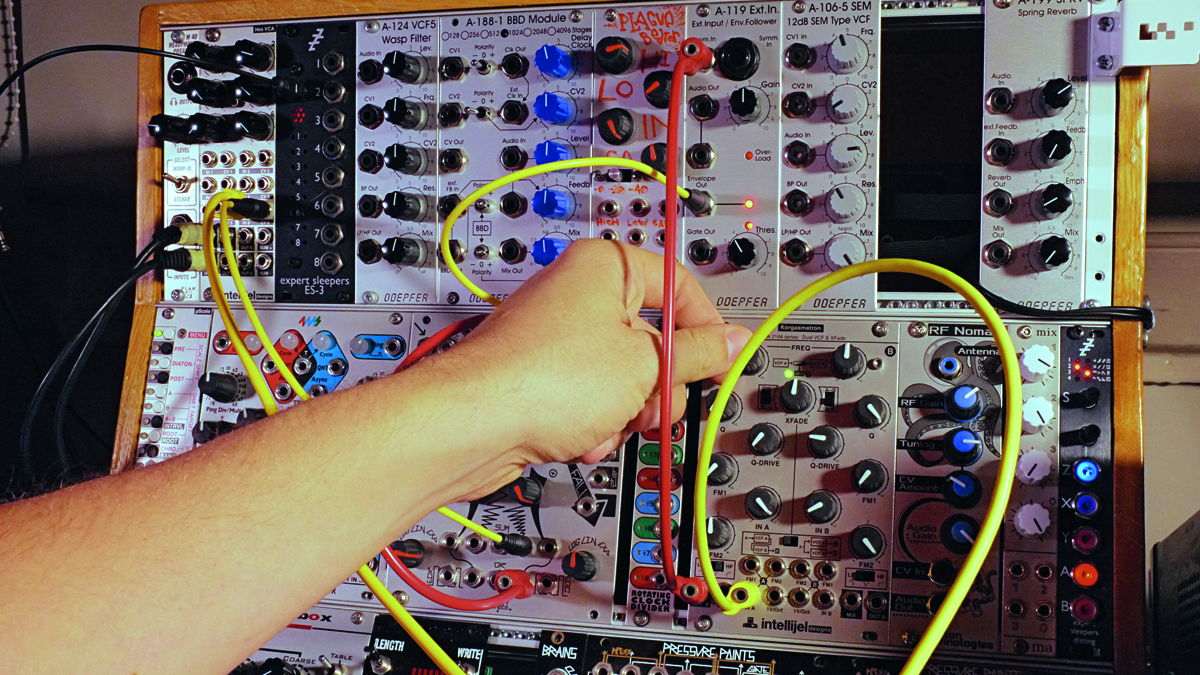How to create a modular compressor
Utilitarian fun
Nobody likes buying utilities. Utilities are boring. Right? Well, that's an easy thing to assume.
When we first configure our modulars we tend to get swept up in the joy of exotic oscillators and filters and perhaps don't think to spec 'sensible' things like attenuverters, comparators, mixers or envelope followers.
As time goes on, however, the more we realise utility modules are the magic glue of modular. We could buy a 'west coast' VCO, but armed with two VCOs, a crossfade module, some VCAs and a wavefolder, we could patch one together.
Sad that your oscillator doesn't have a 'fine tune' control, or octave switches? If you have a Doepfer VC polarizer or a precision adder, it does.
Make your own
Utilities unlock latent functionality in your other modules, and their usefulness compounds, until one day you realise your modular is already capable of doing something you were about to get a dedicated module in order to do.
Take compressors for example. Obviously there's an ocean off-the-shelf, and there are some excellent models in eurorack too, but let's think like we own a modular, and see if we can use 'boring' utilities to actually make one and compress a drum beat through a little patching.
And the interesting control chain we make in doing so can lead to other ideas. What if we use our compressor CV chain to modulate a BBD delay time, or drive the pitch of an oscillator, blended in with our drums? Hang on, this is starting to sound like fun!
Get the MusicRadar Newsletter
Want all the hottest music and gear news, reviews, deals, features and more, direct to your inbox? Sign up here.
With a few simple elements, we can build a studio classic inside of our modular. Here's how to get started…
To make a modular compressor you'll need a few utilities. Firstly, a VCA, aka a volume control with CV control for 'amount', an envelope follower or comparator, the latter of which listens to a signal and generates a gate signal when it passes a certain threshold.
We'll want a slew limiter after that to soften the onset and decay of this new CV signal, aping the attack and release on a 'real' compressor, then an inverter to invert it, so that we're reducing volume when it hits a certain threshold.
We'll feed the result of our CV chain into the VCA's control input, which will dynamically control the drum volume in reaction to the signal, and the settings we make.

Step 1: Use a multiple and split your drum beat to two places - one copy into the VCA's audio input and the other into your comparator or envelope follower. Tweak the threshold setting until it's lighting up rhythmically.

Step 2: Send this new CV to the slew generator. Use it to soften the onset but try leaving the decay fairly abrupt. Invert this signal with an inverter, and feed it into the CV input of the VCA.

Step 3: You'll hear the VCA smacking the drums! Too smacky? Try a high-pass or band-pass filter in the chain before the comparator or envelope follower to manage the pumping bass effect. Try mixing the output with uncompressed drums for parallel compression!
Future Music is the number one magazine for today's producers. Packed with technique and technology we'll help you make great new music. All-access artist interviews, in-depth gear reviews, essential production tutorials and much more. Every marvellous monthly edition features reliable reviews of the latest and greatest hardware and software technology and techniques, unparalleled advice, in-depth interviews, sensational free samples and so much more to improve the experience and outcome of your music-making.
"If I wasn't recording albums every month, multiple albums, and I wasn't playing on everyone's songs, I wouldn't need any of this”: Travis Barker reveals his production tricks and gear in a new studio tour
“My management and agent have always tried to cover my back on the road”: Neil Young just axed premium gig tickets following advice from The Cure’s Robert Smith










